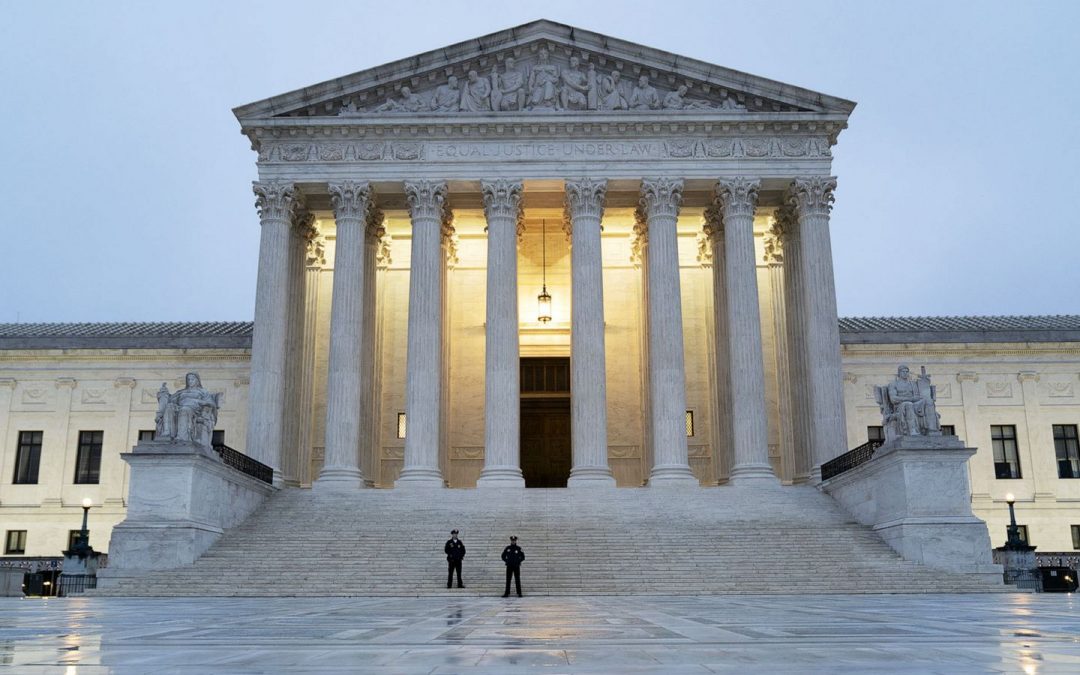(Washington, D.C.) – School districts must be able to address legitimately harmful speech such as bullying, harassment, and threats of violence- whether or not it occurs on school grounds – but must be very specific and distinct with their actions to not overextend their authority, an amicus brief filed Wednesday before the U.S. Supreme Court states. The amicus brief asks the court to create a standard that does not prevent schools from responding to off-campus speech that invades a student’s right to be safe and to access equal educational opportunity (such as harassment and bullying), while also making clear that certain student off-campus speech, such as student activism, remains protected under the First Amendment.
The amicus brief was filed in support of the student in B.L. vs. Mahanoy Area School District, and submitted by the Lawyers’ Committee for Civil Rights Under Law, the National Women’s Law Center, Lambda Legal, pro-bono counsel Ropes & Gray LLP and more than thirty other organizations. The case involves a 14-year-old high school student in Pennsylvania who was suspended from the school’s cheerleading team for using expletives on her personal social media after she failed to make the varsity team. The post occurred on the student’s Snapchat, off school grounds, on a weekend, and did not mention the school. The two courts below ruled that her school violated her First Amendment rights.
The groups emphasize that a school district’s ability to address student speech should not be limited solely by where the speech occurred and, citing substantial research, shows how such a ruling is critical for protecting girls, LGBTQ-plus students, students of color, students with disabilities and other students from historically marginalized groups. But it also accounts for the potential implications of a ruling that could further increase biased discipline rates for Black students and other students from historically marginalized groups who are disproportionately targeted for discipline by schools. If the Supreme Court rules that school districts can regulate student’s speech off-campus in very broad terms, this could also hinder student activism, student protests, and other speech that may be perceived as merely disruptive to the school.
The following are quotes from the lead organizations on the amicus brief:
“This case could decide how far the First Amendment goes in protecting student speech off-campus, and the ability of schools to intervene,” said David Hinojosa, director of the Educational Opportunities Project at the Lawyers’ Committee for Civil Rights Under Law. “It is imperative that the Supreme Court’s ruling in this case not only ensures that our nation’s schools are safe spaces where all students can be free from harassment and bullying no matter where it occurs, but also ensures that schools do not become instruments for abuse that further exacerbate terrible discipline referrals for Black students and other students and silence student voice on important racial and social justice issues.”
“Harassment between students—which often occurs outside of the classroom or online—can cause significant harm, including to girls. As such, the Court should not restrict schools’ authority to protect students’ rights to safety and equal access to educational opportunities merely because an incident of harassment occurs off campus,” said Sunu Chandy, legal director for the National Women’s Law Center. “However, schools also should not be permitted to punish off-campus student speech that is not harmful to other students, merely because they consider it too “disruptive.” After all, that would unduly stifle students’ rights to protest and may lead to excessive and unwarranted school discipline, including, too often, for Black and brown girls.”
“Student misconduct that involves hate, bias, or prejudice can have a devastating impact on victims and often reverberates across campus and the broader school community,” said Paul Castillo, counsel and students’ rights strategist at Lambda Legal. “Schools should not have to question whether they can effectively respond to bullying, harassment, and threats within the school community that target any student based on the student’s identity, regardless of whether such conduct occurs on campus or during school hours. This is especially true for LGBTQ youth and young adults, who disproportionately face such attacks based on their sexual orientation and gender identity. Simply put, the law must permit schools to address off-campus bullying to foster a safe, supportive and inclusive educational environment while at the same time ensuring that students maintain robust First Amendment protections, which can be particularly important for LGBTQ students. Schools too often discipline LGBTQ students unfairly, especially girls and students of color, simply for engaging in coming-out speech or for expressing who they are.”
“Ropes & Gray is proud to collaborate with the National Women’s Law Center (NWLC), Lambda Legal, and the Lawyers’ Committee for Civil Rights Under Law on this important amicus brief. Whether and how schools regulate off-campus speech will continue to have significant effects on students belonging to historically marginalized groups, including girls and women, LGBTQ students, students of color, and students with disabilities,” said Stephanie Webster, partner at Ropes & Gray LLP. “NWLC, Lambda, the national Lawyers’ Committee, and the 30 other amici organizations that have joined this brief are leaders in advocating for students belonging to these groups and are uniquely positioned to educate the court on their perspectives.”
Read the full amicus brief here.
###
About the Lawyers’ Committee for Civil Rights Under Law – The Lawyers’ Committee for Civil Rights Under Law (Lawyers’ Committee), a nonpartisan, nonprofit organization, was formed in 1963 at the request of President John F. Kennedy to involve the private bar in providing legal services to address racial discrimination. The principal mission of the Lawyers’ Committee for Civil Rights Under Law is to secure, through the rule of law, equal justice for all, particularly in the areas of voting rights, criminal justice, fair housing and community development, economic justice, educational opportunities, and hate crimes. For more information, please visit https://lawyerscommittee.org.


